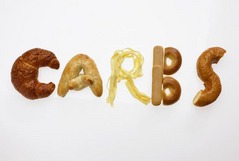Many people use carbohydrate counting (“carb counting”) as a meal planning approach to managing diabetes. Carb counting came out of a huge study that was conducted in the 80s and early 90s called the Diabetes Control and Complications Trial (DCCT). In fact, the results of the DCCT were published in 1993, so I’m considering 2013 carb counting’s 20th anniversary! Prior to carb counting, people with diabetes who managed with insulin, took a certain amount of insulin, and ate a certain amount of food at certain times, every day.
The nice thing about carb counting is that it freed people up to decide what they were planning to eat, and then take insulin accordingly. Fortunately, new and faster-acting types of insulin became available shortly after carbohydrate counting was introduced. So now we can take the right amount of meal time insulin for the amount of carbohydrate we’re eating. This works because carbohydrate is the type of nutrient that has the biggest effect on blood glucose.
When we eat carbohydrate foods (starches, grains, fruit, milk) they start to break down immediately. They cause the blood glucose level to rise about 20 or so minutes after we start eating. With the newer, rapid-acting insulins, carbohydrate’s effect on the blood glucose is peaking about the same time the insulin is working its hardest. This combination leads to better management of blood glucose levels.
Paying attention to the timing of insulin injections, or fine-tuning insulin doses with an insulin pump, can help those with diabetes respond even better to the carbohydrates they eat. The bottom line is that carbohydrate counting gives us freedom to choose our foods and when we eat them.

